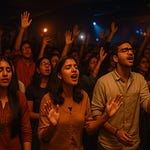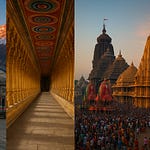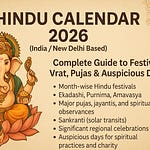The Divine Footsteps of Lakshmana
The name Laxman Jhula originates from the legend that Lakshmana, the younger brother of Lord Rama, crossed the mighty Ganga at this very spot using a jute rope bridge during their exile (vanvas). This spot holds immense significance in the epic Ramayana, where the celestial Ganga bore witness to the footsteps of dharma, bravery, and devotion.
It is believed that Lakshmana meditated and performed penance here to purify his soul and seek Lord Shiva’s blessings. The tapasya bhoomi (penance ground) hence became sacred to both Vaishnavite and Shaivite traditions.
📜 Historical Foundation and Construction
The current Laxman Jhula is an iron suspension bridge built in 1929 and completed in 1930, replacing the older jute-rope bridge that was washed away in floods. The construction was spearheaded by local rulers and devotees who recognized the site's mythological value and spiritual magnetism. It spans 450 feet across the Ganges River, connecting the villages Tapovan (Tehri Garhwal) on the west and Jonk (Pauri Garhwal) on the east.
The British colonial government supported its engineering, and since then, it has been an iconic pedestrian crossing for pilgrims, saints, cows, monkeys, and spiritual wanderers.
🕉️ Spiritual Significance: A Bridge Between Two Worlds
Crossing Laxman Jhula is considered by many as a purifying act. It is not merely a structure of steel and cable but a symbolic bridge between the material world and spiritual liberation (moksha).
Walking across this bridge is believed to burn negative karma and bring one closer to moksha. Many devotees chant Ram naam or Om Namah Shivaya while crossing it, especially during Mahakumbh, Navratri, and Sawan.
🙏 Daily Rituals, Aarti, and Puja Practices
Near the Laxman Jhula, you'll find revered temples like:
Laxman Temple (near the east bank)
Tera Manzil Temple (Trayambakeshwar Temple) – a 13-storey marvel
Raghunath Temple
Every day, pujas and aartis are performed here by priests and ascetics. The Ganga Aarti in the evening, although more grand at Parmarth Niketan, also resonates beautifully near Laxman Jhula, with floating diyas and chants echoing in the winds.
A Typical Day of Worship Includes:
Mangala Aarti (Morning) – Welcoming the divine at sunrise
Shringar Aarti – Decoration and offerings to Lakshmana & Rama
Bhog Aarti – Offering food and prasadam
Sandhya Aarti – Sunset hymns with lamps, mantras, and bells
Shayan Aarti – Putting the deities to rest at night
🎶 Bhajans and Chanting: Echoes of Devotion
As the sun dips into the Himalayan ridges, bhajan mandalis and ashrams near the jhula come alive. Instruments like dholaks, harmoniums, manjiras, and even conchshells fill the air. You’ll hear:
“Ram Siya Ram, Siya Ram Jai Jai Ram”
“Shiv Tandav Stotram”
“Om Namah Shivaya”
“Jai Jai Ram Krishna Hari”
Foreigners and Indian sadhus often gather in circles, turning the Ganga banks into a global stage of devotion.
🧘♂️ Mystery and Energy Fields Around Laxman Jhula
Many believe that this site sits on a ley line – a spiritual energy grid of the Earth. Saints like Swami Shivananda, Maharishi Mahesh Yogi, and Neem Karoli Baba have meditated in this region. It is said the vibrational energy around Laxman Jhula induces deep states of meditation, awakening, and inner calm.
🌿 Temples and Ashrams Nearby
Tera Manzil Temple – Each floor dedicated to a different deity
Shri Kailash Ashram – One of the oldest Vedantic centers
Parmarth Niketan Ashram – Spiritual headquarters for many yoga and Ganga aarti events
Swarg Ashram – Meditation & yoga retreat area
Beatles Ashram (Chaurasi Kutia) – Where The Beatles meditated under Maharishi Mahesh Yogi
🚶 Devotee Experience: Stories of Miracles and Peace
Devotees recount how their illnesses, mental stress, and life dilemmas seemed to dissolve after spending a few hours on Laxman Jhula. It's a place of surrender, where travelers shed burdens and pick up silence, clarity, and devotion.
Some speak of a strange pull – as if the bridge calls them back again and again.
🧳 Travel Guide: How to Visit Laxman Jhula
✈️ By Air:
Nearest airport – Jolly Grant Airport, Dehradun (approx. 22 km)
🚆 By Train:
Nearest station – Rishikesh Railway Station (approx. 5 km)
🛣️ By Road:
Well connected by NH58 from Delhi, Haridwar, and Dehradun.
🏨 Where to Stay:
Parmarth Niketan Ashram (spiritual stay)
Hotel Ganga Kinare
Zostel Rishikesh (for youth)
Budget Dharamshalas and guesthouses near Swarg Ashram
🗓️ Best Time to Visit
Mahashivratri and Ram Navami – Divine celebrations
Sawan Month (July–August) – Devotees of Shiva flock here
Mahakumbh Mela (next: 2025) – Millions gather for soul cleansing
Winter (Nov–Feb) – Ideal for clear skies, fewer crowds
Yoga Festival (March) – International yoga events take place
📸 Visuals & Reels
Want to capture the soul of India in a 15-second clip? Film the sunset glow on Ganga, monkeys swinging near the cables, chanting pilgrims, and the temple bells in the backdrop. A reel with the right bhajan and caption like:
“Laxman Jhula Diaries: Where faith walks on iron and floats on the Ganga.”
#TredingReel #ShivaBhakt #Mahakumbh2025 #SpiritualIndia #ViralReels
…can stir hearts and minds alike.
🔱 Laxman Jhula Is Not Just a Bridge
It’s a living chapter of mythology, a timeline of India’s dharmic journey, a place where past meets present, and every footstep carries a whisper of Lord Ram’s exile and Lakshman’s unwavering loyalty.
For the seeker, it offers bhakti.
For the traveler, it offers beauty.
For the broken, it offers healing.
And for the yogi, it offers union.
Har Har Mahadev. Jai Shri Ram.
May your soul find what it seeks at Laxman Jhula.










